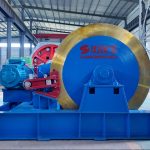

1. The operating environment should be kept dry at all times, the surface of the motor should be kept clean, and the air inlet should not be blocked by dust, fibers, etc. When the thermal protection of the motor continuously operates, it should be found out whether the fault comes from the motor or overload or the setting value of the protection device is too low. The fault can be put into work only after the fault is removed.
2. Ensure that the motor is lubricated during operation. When a general electric motor works for about 5,000 hours, the grease should be compensated or replaced. When the bearing is found to be overheated or the lubrication deteriorates during operation, the hydraulic grease should be replaced in time. When replacing grease, the old lubricating oil should be removed, and the oil grooves of the bearing and bearing cap should be cleaned with gasoline, and then ZL-3 lithium grease should be filled into 1/2 and 2/3 of the cavity between the inner and outer rings of the bearing.
3. When the life of the bearing ends, the vibration and noise of the motor operation will be significantly larger. Check that the radial travel of the bearing reaches the following value and replace the bearing. When disassembling the motor, you can take out the rotor from the extended end or non-extended end of the shaft. If there is no need to remove the fan, it is more convenient to remove the rotor from the non-shaft extension end. When extracting the rotor from the stator, avoid damaging the stator winding or insulation.
4. When replacing the winding, it is necessary to write down the original winding method, standard, number of turns, wire gauge, etc. When these data are lost, you should ask the manufacturer for it. Changing the original planned winding at will will deteriorate a certain function of the motor, or even make it impossible to use.



